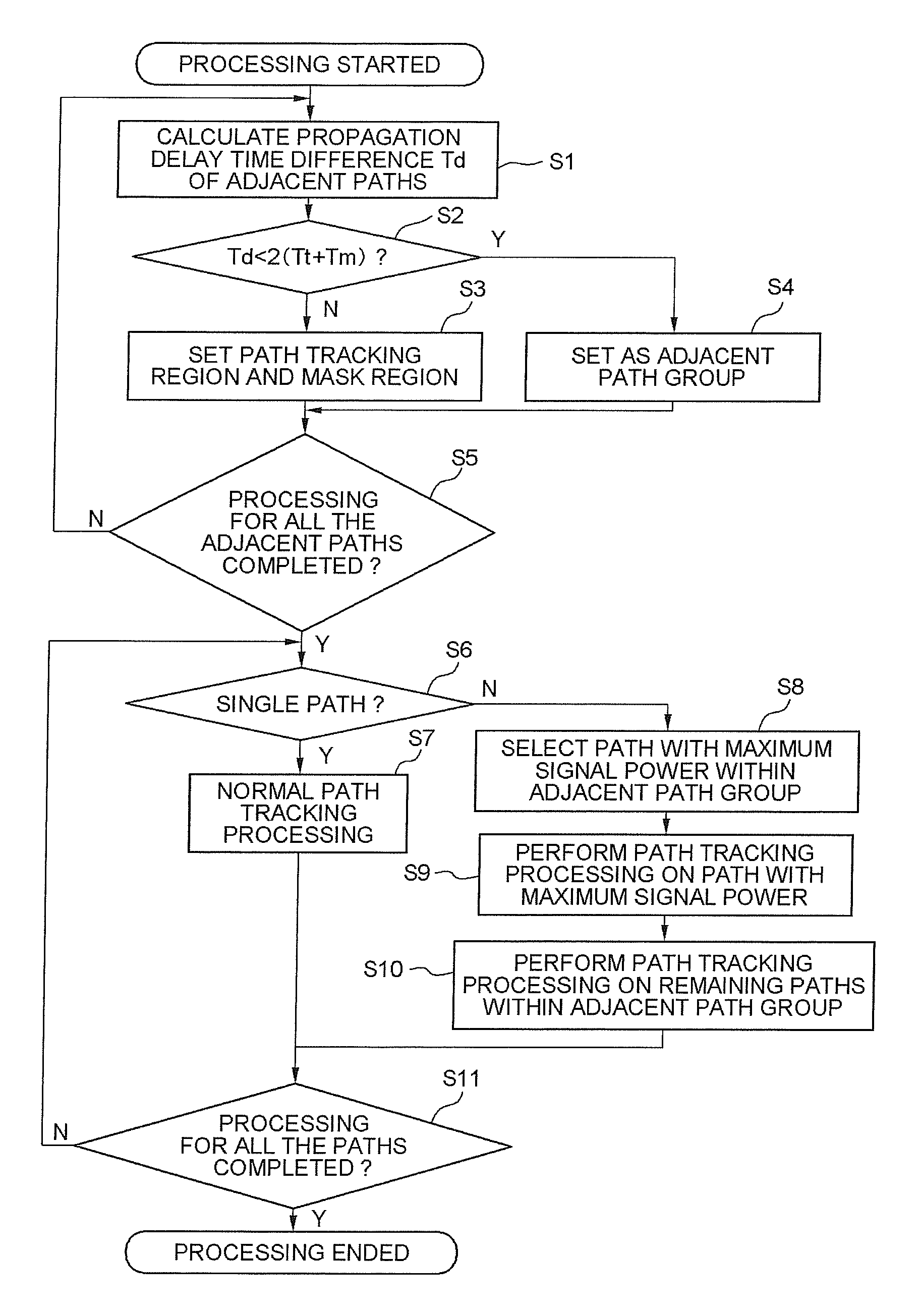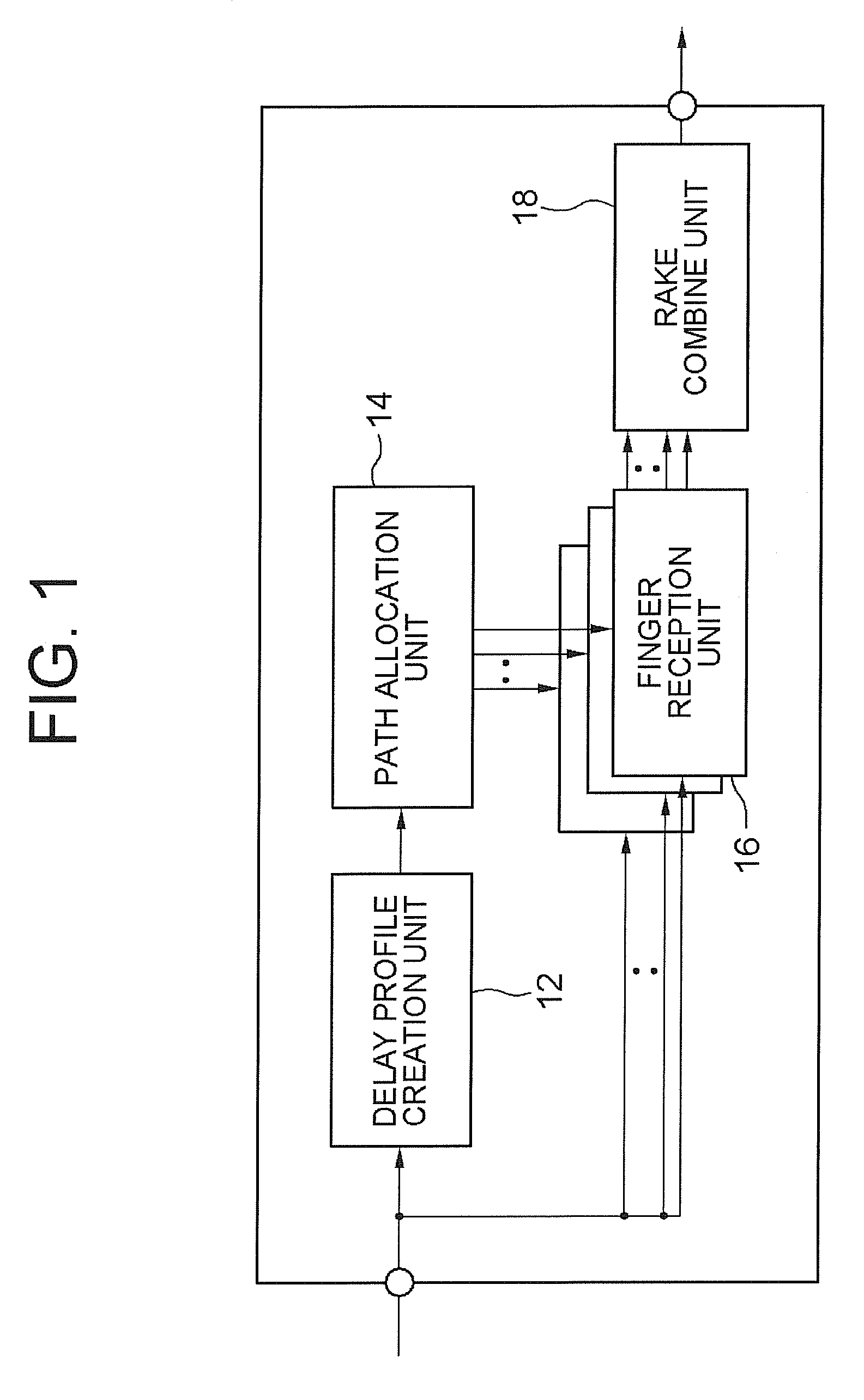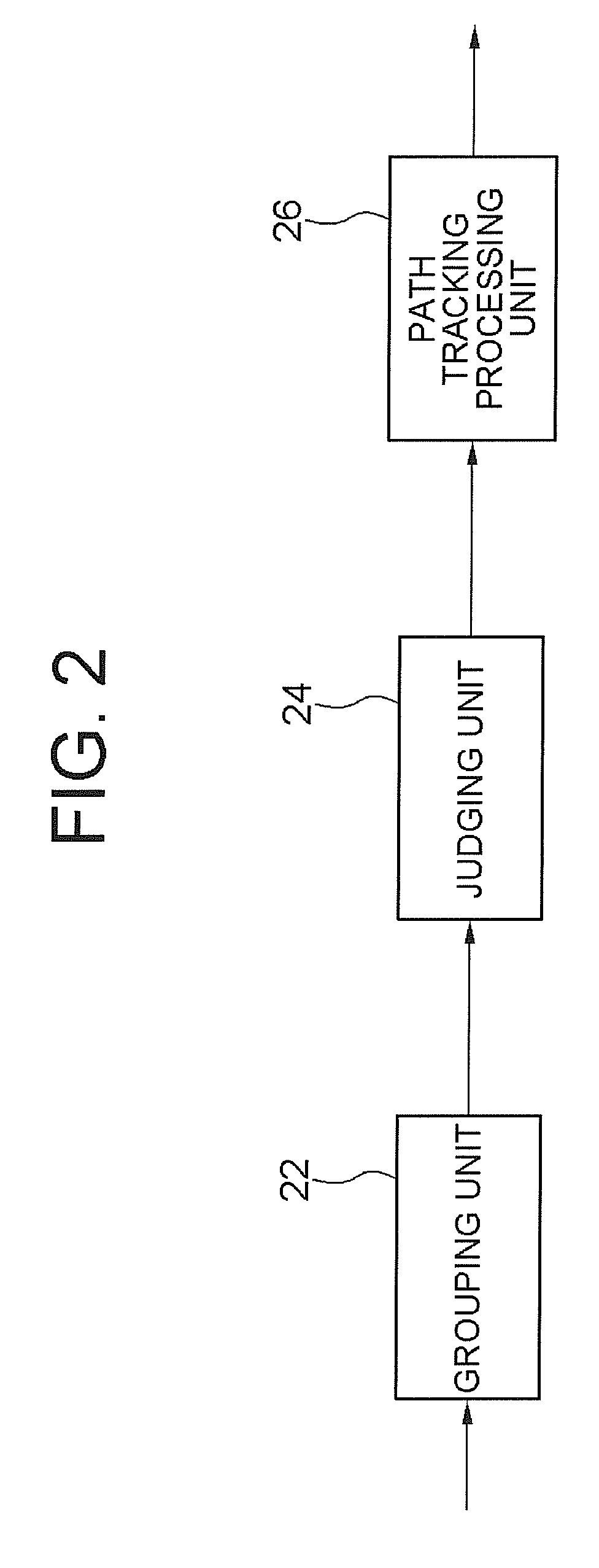Mobile communication system receiver, path tracking method, and control program thereof
a technology of mobile communication system and control program, which is applied in the direction of transmission, electrical equipment, etc., can solve the problems of deteriorating reception quality, waste of limited resources of finger receivers, and inability to obtain path diversity effect, etc., and achieve the effect of improving path tracking performan
- Summary
- Abstract
- Description
- Claims
- Application Information
AI Technical Summary
Benefits of technology
Problems solved by technology
Method used
Image
Examples
first exemplary embodiment
(First Exemplary Embodiment)
[0033]A case of applying the receiver of the mobile communication system according to the exemplary embodiments to a DS-CDMA mode receiver will be described as a first exemplary embodiment. As described above, a CDMA receiver 1 according to the first exemplary embodiment puts the paths of multipath multiplexed signals received via a plurality of propagation paths into a group when path tracking regions and mask regions set for those paths overlap with each other, gives priority orders to each path within the groups, and performs tracking operations of each path according to the priority orders. As shown in FIG. 1, the CDMA receiver 1 has a delay profile creation unit 12, a path allocation unit 14, a plurality of numbers of finger reception units 16, and a rake combine unit 18. Although not shown, the CDMA receiver has a radio reception unit and an A / D conversion unit. Base band digital signals that are digital signals converted from analog signals in the ...
second exemplary embodiment
(Second Exemplary Embodiment)
[0075]In the first exemplary embodiment, the priority orders when performing the path tracking operations for the paths of the adjacent path group are set based on the signal power values. However, it is not limited only to such case. The priority orders may be set based on the time orders at which the paths of the adjacent path group are separated / extracted. The same effects as those of the first exemplary embodiment can be obtained also with this structure. Further, for grouping the paths, it is possible to put the paths into a group every time the path tracking processing is performed for a single path or at the point where the path tracking processing for all the assumed multipaths is completed.
third exemplary embodiment
(Third Exemplary Embodiment)
[0076]In this exemplary embodiment, the priority orders when performing the path tracking operations for the paths set as the adjacent path group may be set based on the orders of allocating the finger reception units to the paths. The same effects as those of the first exemplary embodiment can be obtained also with this structure.
PUM
 Login to View More
Login to View More Abstract
Description
Claims
Application Information
 Login to View More
Login to View More - R&D
- Intellectual Property
- Life Sciences
- Materials
- Tech Scout
- Unparalleled Data Quality
- Higher Quality Content
- 60% Fewer Hallucinations
Browse by: Latest US Patents, China's latest patents, Technical Efficacy Thesaurus, Application Domain, Technology Topic, Popular Technical Reports.
© 2025 PatSnap. All rights reserved.Legal|Privacy policy|Modern Slavery Act Transparency Statement|Sitemap|About US| Contact US: help@patsnap.com



